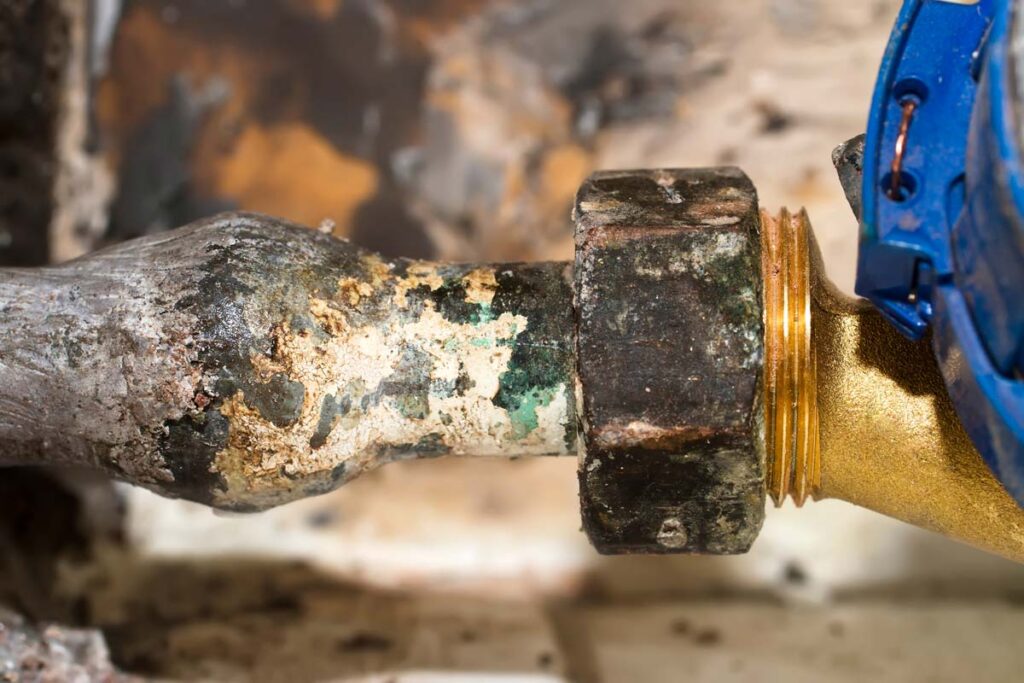
EPA lead pipes proposal overview:
- Who: The U.S. Environmental Protection Agency has released a proposal aimed at replacing all lead pipes in the country in the next 10 years.
- Why: Lead exposure has been associated with significant health problems.
- Where: The EPA’s proposal would affect U.S. water systems.
The U.S. Environmental Protection Agency is proposing to replace all lead pipes in the United States over the next decade due to the irreversible health effects associated with exposure to lead in drinking water, Law360 reports.
The new proposal, which was released Nov. 30, is meant to bolster the agency’s current lead and copper rule, which was implemented in 1991 and revised most recently in 2021. It proposes improvements that would require most water systems to replace lead service lines within 10 years, the EPA said.
The EPA notes that lead pipes were commonly used in home plumbing and water distribution systems. The pipes can corrode over time and release lead particles into the drinking water.
Lead exposure has detrimental health effects. It can damage the brain and kidneys. Even low levels of lead exposure in children can cause them to have a lower intelligence quotient or learning or behavioral issues.
In adults, lead exposure can increase the risk of significant health issues such as heart disease, high blood pressure, kidney problems, nervous system problems and cancer.
The first step in implementing the lead pipes replace proposal is to locate legacy lead pipes, according to the agency.
EPA lead pipes proposal also includes public notification requirements
The EPA says it intends to finalize the new proposal by Oct. 16, 2024. Once finalized, all water systems would be subject to the following requirements: they must update their inventories regularly, create a publicly available service line replacement plan and identify the materials that make up service lines that are made of materials that are currently unknown.
Additionally, the EPA lead pipes proposal would improve tap water sampling and implement protections to reduce lead exposure. The lead action level will reportedly be lowered from 15 micrograms per liter to 10 micrograms per liter.
If a water system’s lead sampling is determined to be too high, the system would be required to notify the public and take steps to reduce lead exposure while working on a lead pipes replace plan.
The Biden Administration has launched a Lead Pipe and Paint Action Plan to reduce the amount of lead exposure to people in the U.S. Recently, $15 billion in funding for lead pipes replace was reportedly approved by the Bipartisan Infrastructure Law.
The EPA also recently proposed to ban trichloroethylene and add mandatory reporting restrictions for per- and polyfluorinated substances (PFAS) due to the risks they pose to human and environmental health.
What do you think about the EPA lead pipes proposal? Join the discussion in the comments.
Don’t Miss Out!
Check out our list of Class Action Lawsuits and Class Action Settlements you may qualify to join!
Read About More Class Action Lawsuits & Class Action Settlements:
- Class actions allege Connecticut utilities sold water containing PFAS
- Consumers, politicians, agencies seek to address environmental issues via lawsuits, other means
- Chemours, DuPont class action claims companies discharged wastewater containing forever chemicals
- Judge grants preliminary approval to $12.5B 3M PFAS settlement














